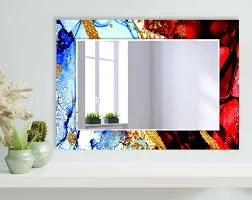

The Aesthetics and Benefits of Tinted Float Glass
Tinted float glass is increasingly becoming a popular choice in modern architecture and interior design, offering both functional and aesthetic benefits. With its distinct coloration and visual appeal, tinted float glass not only enhances the beauty of a space but also provides numerous advantages such as glare reduction, energy efficiency, and enhanced privacy.
At its core, tinted float glass is produced through a process where colored materials are added to the glass during manufacturing. This results in a uniform coloration that permeates the entire pane, ensuring that the tint does not fade or degrade over time. Common tints include bronze, gray, green, and blue, each providing a different ambiance and character to buildings. The choice of tint can significantly influence the design elements of a structure, allowing architects and designers the flexibility to create visually stunning facades.
One of the primary benefits of tinted float glass is its ability to reduce glare. In environments with abundant sunlight, excessive glare can hinder visibility and cause discomfort. Tinted glass minimizes the amount of sunlight entering a space, creating a more comfortable atmosphere for occupants. This is especially important in commercial buildings, where glare can negatively impact productivity and customer experience. By employing tinted float glass, businesses can create inviting interiors that allow natural light to filter through without causing harsh reflections.

Energy efficiency is another significant advantage of tinted float glass. By reducing solar heat gain, tinted glass can help maintain a stable indoor temperature. This characteristic is particularly beneficial in regions with hot climates, where cooling costs can skyrocket during peak summer months. By utilizing tinted float glass, buildings can reduce their dependency on air conditioning systems, leading to decreased energy consumption and lower utility bills. Moreover, tinted glass can contribute to a building’s sustainability goals by minimizing its environmental impact.
Privacy is a crucial consideration in both residential and commercial spaces. Tinted float glass effectively enhances privacy without sacrificing natural light. In urban settings, where buildings are close together, having tinted windows can shield occupants from prying eyes while still allowing light to permeate the interior. This is particularly relevant in offices, where confidential meetings and discussions take place regularly. Tinted glass installations can create a sense of security and comfort for both employees and clients.
In addition to its functional benefits, tinted float glass also plays a significant role in promoting safety. Many tinted glass options come with added features such as increased strength and shatter resistance. This makes them ideal for high-rise buildings and public spaces where the risk of breakage needs to be minimized. Furthermore, colored glass can help conceal dirt and stains, ensuring that maintenance is manageable and the aesthetic appeal remains high over time.
In conclusion, tinted float glass serves as an excellent choice for architects and designers looking to enhance the functionality and appearance of their projects. By combining elegant design with practical benefits, tinted glass effectively addresses common challenges such as glare, energy efficiency, privacy, and safety. As the demand for sustainable and aesthetically pleasing building materials continues to rise, tinted float glass is sure to remain a staple in contemporary architecture, offering lasting beauty and performance for years to come.